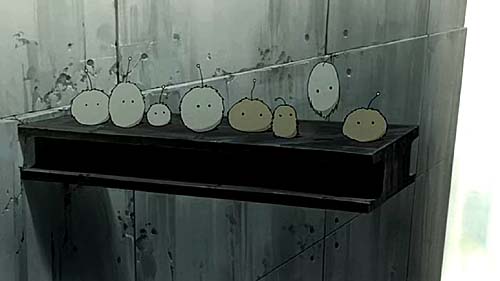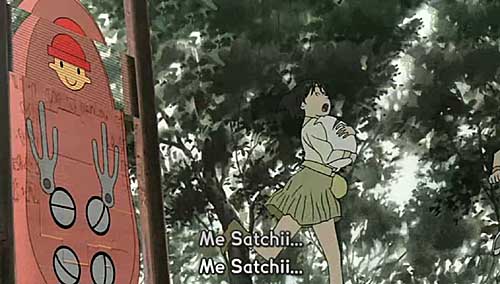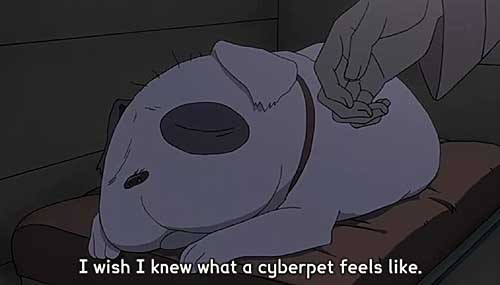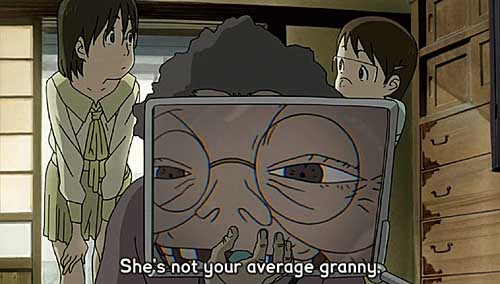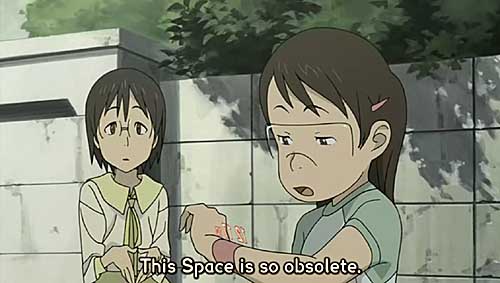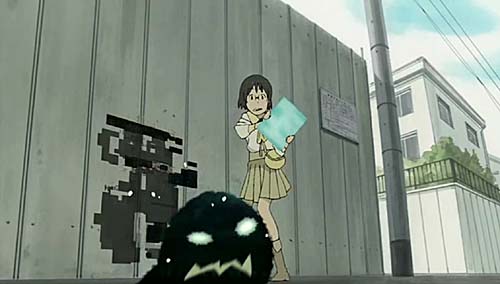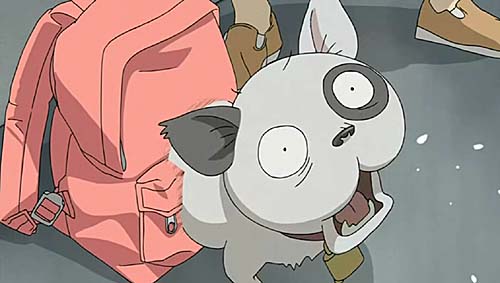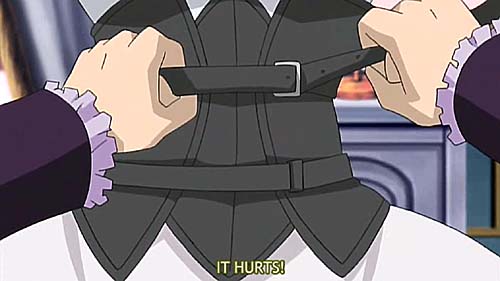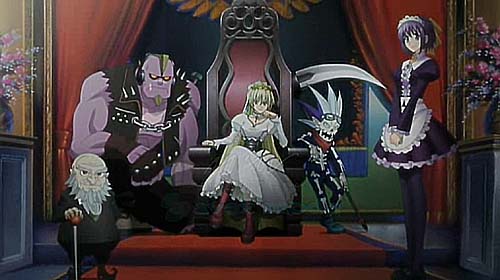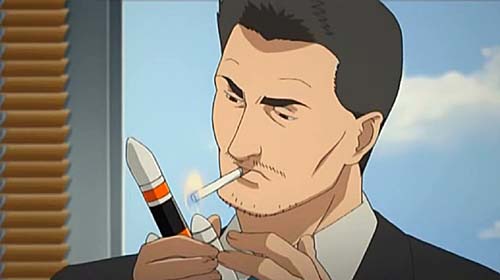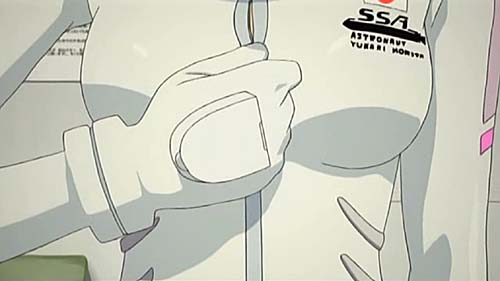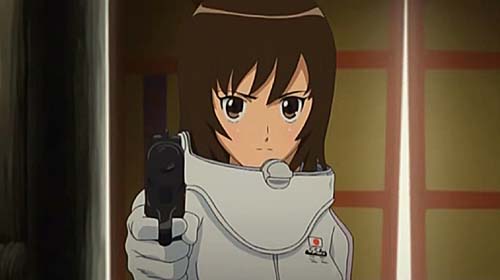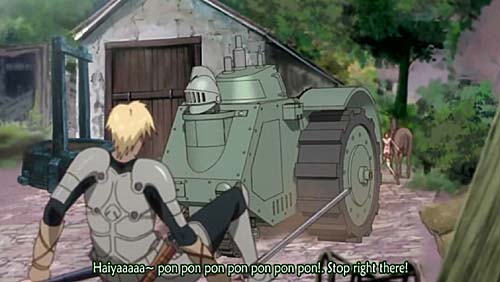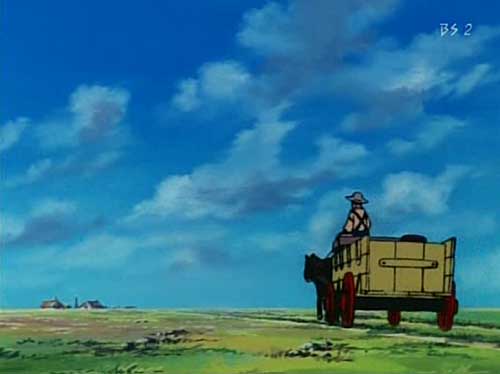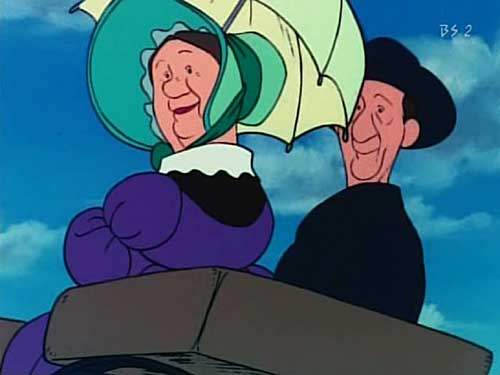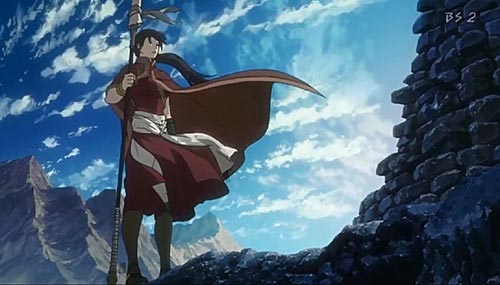
I’m down to three fansubs: two substantial stories, Denno Coil and Seirei no Moribito, and a cheesy entertainment, Murder Princess. ((I might add Oh! Edo Rocket to the list, depending on how good the second episode is. I hope to see more of the Waragetcha 5, but the translation of Master of Epic proceeds very slowly. I may resume watching Darker Than Black, Claymore and El Cazador, depending on what I read about further episodes.)) At this point, I think that DC and SnM are the two best shows of the year and better than anything from last year. ((I count Mushishi as a 2005 series.)) (I reserve the right to change my mind if either turns stupid, but I doubt that will happen.) I hesitate to write any more about the former lest I oversell it, ((Here’s the Denno Coil opening and trailer combined, which hints at the quality of the production and the tone.)) but latter deserves some comment.
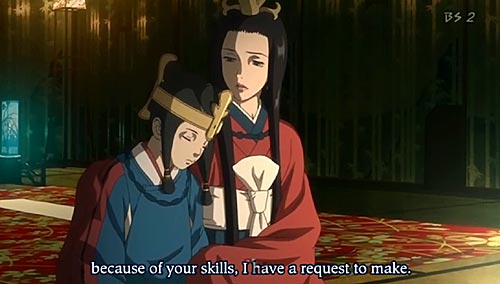
Seirei no Moribito, or Guardian of the Sacred Spirit, is set in a mythical Asian land. Balsa, an expert spearwoman, rescues the prince Chagum from drowning when the oxcart he is traveling in falls off a bridge. His mother subsequently asks Balsa to be his bodyguard. Chagum needs one; he contains within himself the egg of a water spirit, and for reasons connected with that, his father the emperor wants him dead. Thus far, Balsa and Chagum have evaded the assassins, and eleven-year-old Chagum is learning about life outside the palace.
Production values are high, but the appeal of Seirei no Moribito is in the characters and story. Balsa and Chagum are fully-realized three-dimensional, sympathetic characters. Chagum in particular is appealing, combining a deep sense of responsibiility with childish naiveté. It is easy to imagine him growing up to be emperor someday.
Seirei no Moribito is based on a series of novels by Nahoko Uehashi. The makers of the anime have enough confidence in the story that they don’t feel any need to make every episode action-packed. When there is fighting, it’s spectacular (here are excerpts from the third episode ((This is mildly spoilerish, but you don’t really expect the central characters to be killed off that early, do you?)) ), but it’s sparse. The eighth episode is particularly suspenseful, and it’s mostly just characters talking and telling stories.
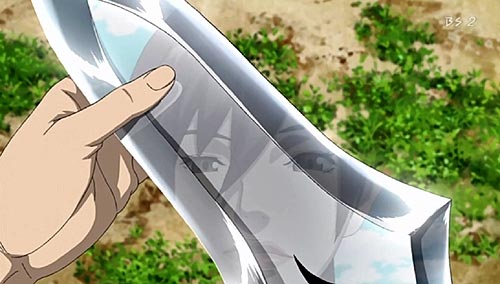
One element worth noting is that, although Balsa and Chagum don’t lack enemies, none of the characters thus far are evil, not even the emperor who orders his son’s death. The imperial diviners have discovered ominous signs that may be connected with the water spirit, or demon, within the prince, and the emperor’s decision, tragically wrong though it may be, is understandable. (My hunch is that there is indeed a connection, but it’s not what they think, and Chagum’s death would be disastrous.)
I’m violating my usual policy in watching Seirei no Moribito. Hitherto, I have never downloaded a fansub of a show once a license was announced (it’s going to be a long time before I know how Death Note ends). My feeble excuse is that this is one of the best series I’ve seen in a long time, I’m impatient to see the rest, and there is as yet no mention of it under either title on the Geneon website. If you have the self-control, the ideal course of action is to emulate Wabi Sabi: wait until the entire series is available, and then marathon the show. Here in region 1, that could quite possibly involve a two-year wait.



